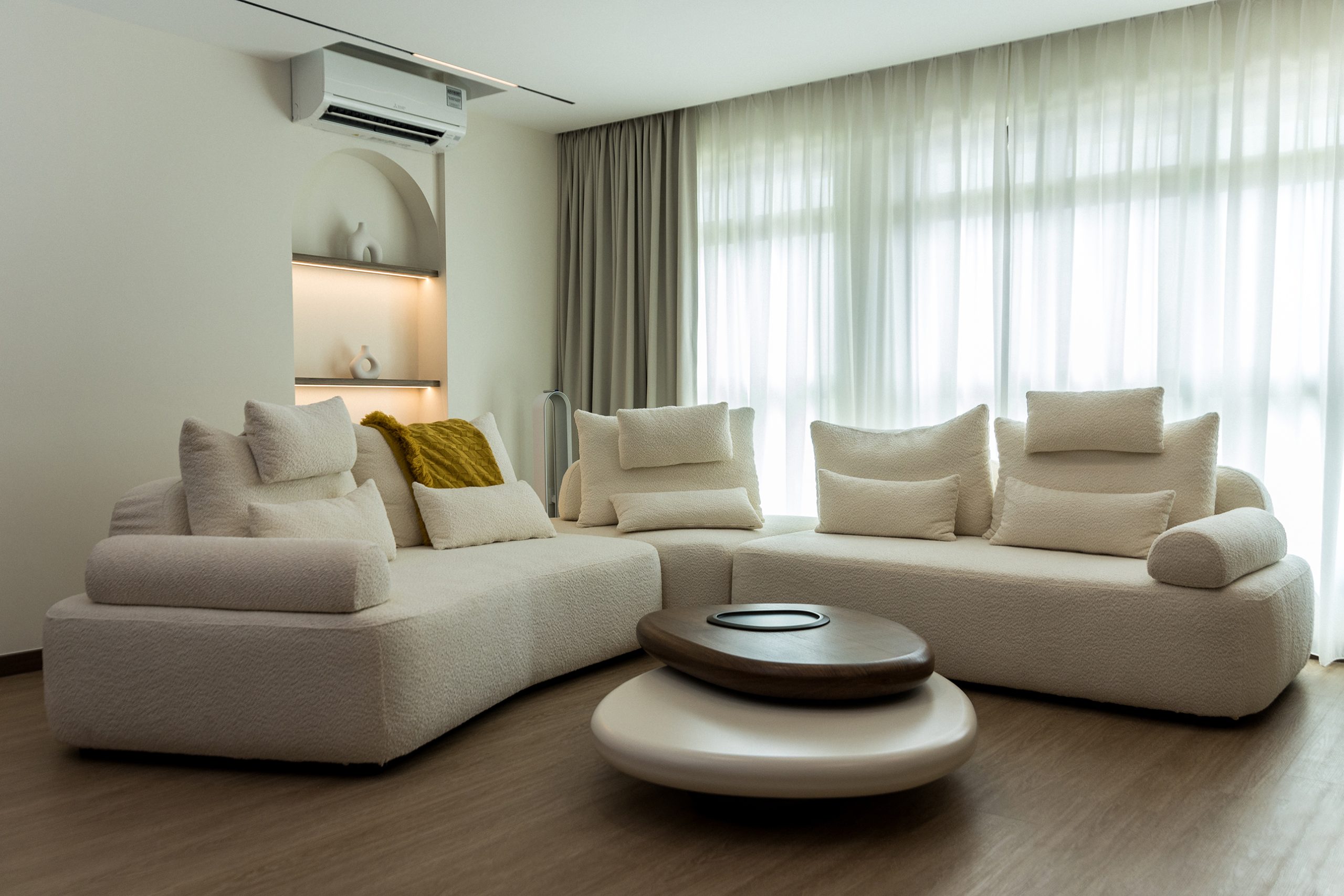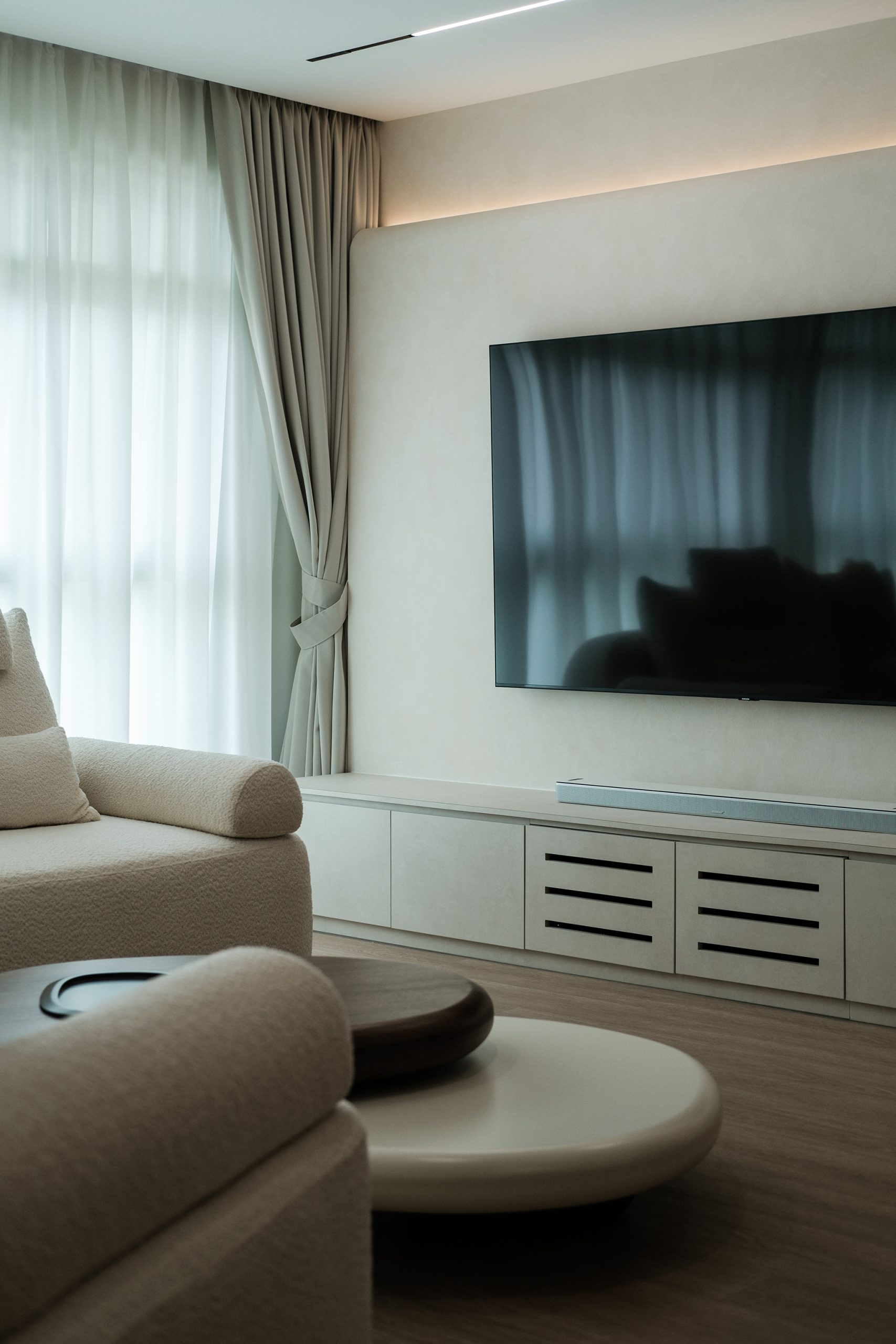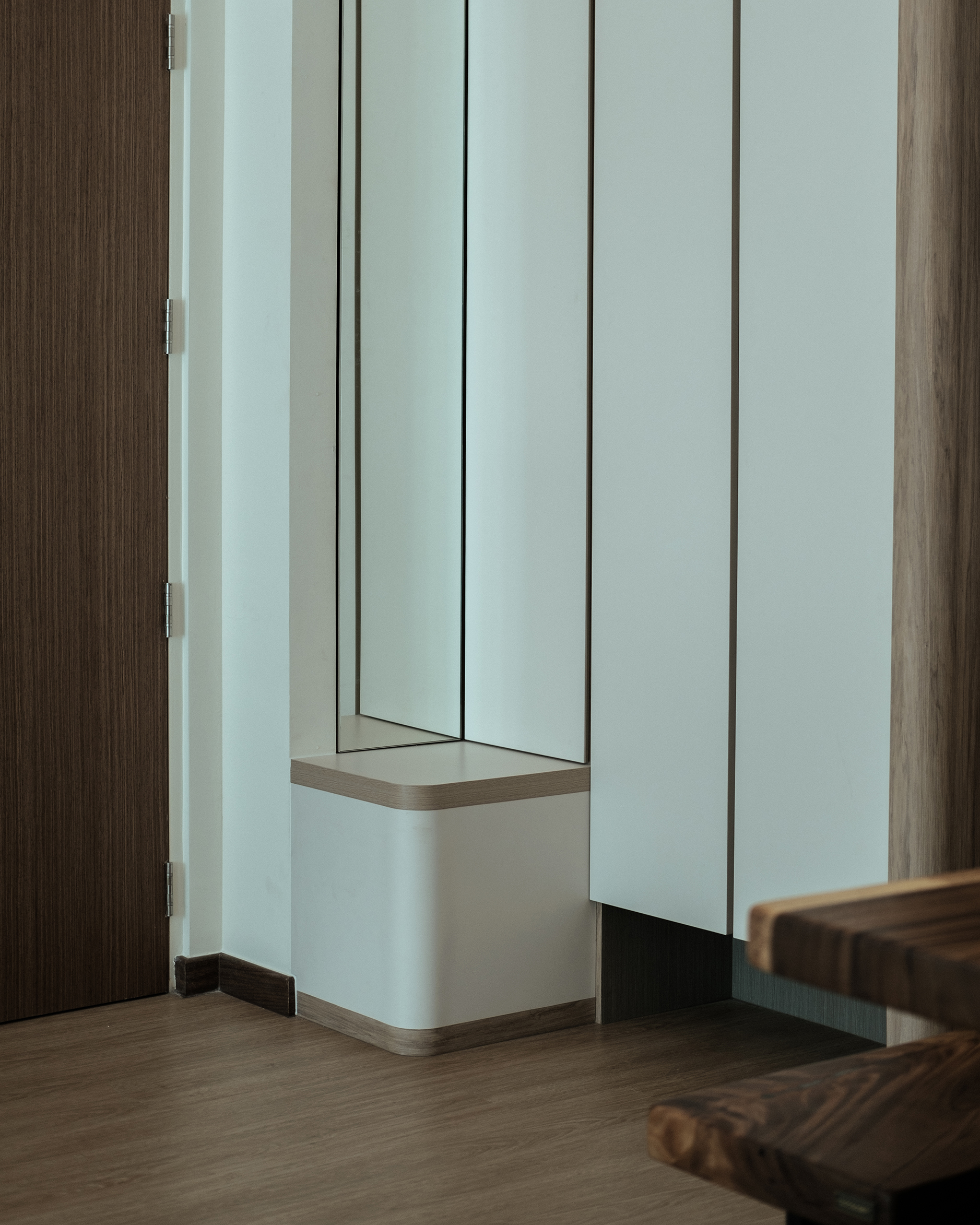In the quiet moments of a fast-paced life, where the noise of the city fades into the background, the yearning for simplicity becomes unmistakable. This is where Wabi Sabi interior design speaks to us—a philosophy that finds beauty in the imperfect, the transient, and the unadorned. In a bustling metropolis like Singapore, the concept of Wabi Sabi offers a breath of fresh air, an antidote to the clutter and chaos that often accompany modern living. But how do you weave this ancient aesthetic into the fabric of contemporary urban life? The challenge is real: small living spaces, the high cost of living, and the relentless pace of the city can make the idea of a serene, beautifully imperfect home seem almost unattainable.
In This Article
Toggle
Yet, the allure of Wabi Sabi interior design persists. It’s a vision of a home where the worn edges of a wooden table tell a story, where the natural light highlights the textures of handcrafted ceramics, and where every object, no matter how humble, has its place. This is not just about decoration—it’s about creating a space that resonates with the soul. But the journey from concept to reality can feel overwhelming, especially when navigating the constraints of urban life.
As interior designers, we don’t just renovate—we transform homes into personalized sanctuaries where beauty meets function.We Design Spaces That Speak Your Style
This is where Todzterior enters the picture. With a deep understanding of both the Wabi Sabi philosophy and the unique demands of Singaporean homes, we offer more than just design services—we offer a partnership. We bring a blend of affordability, personalized design, and comprehensive renovation services to the table, ensuring that your space not only captures the essence of Wabi Sabi but also functions seamlessly in your everyday life.
Understanding Wabi Sabi: The Philosophy Behind the Aesthetic
Wabi Sabi is more than just a design trend; it’s a philosophy deeply rooted in Japanese culture that finds beauty in the imperfect, the incomplete, and the transient. This aesthetic values simplicity, natural materials, and the authenticity that comes with age and use. In a modern context, especially in a city like Singapore where space is at a premium, Wabi Sabi offers a refreshing approach to living—one that prioritizes what is essential and discards what is superfluous.
By embracing Wabi Sabi, you allow yourself to let go of the need for perfection. The chips on a favorite ceramic bowl, the weathered texture of a wooden table, or the asymmetry in a handmade vase are not flaws but expressions of life’s natural ebb and flow. In a home where Wabi Sabi reigns, every object tells a story, and every corner invites calm. Yet, the challenge lies in translating this philosophy into a home that also serves the practical needs of a contemporary family. This is where Todzterior excels, ensuring that your space is not only beautiful but also functional and tailored to your lifestyle.

Timeless Craftsmanship Meets Modern Design
The essence of Wabi Sabi is found in the craftsmanship that values the hands of the maker, the rawness of natural materials, and the wisdom of traditional techniques. But how does this translate into a modern Singaporean home? The answer lies in a careful balance of old and new, where timeless craftsmanship is seamlessly integrated with modern design elements.
At Todzterior, we believe that every piece in your home should serve both aesthetic and functional purposes. Our approach to Wabi Sabi interiors emphasizes the use of natural, sustainable materials such as wood, stone, and clay—each chosen for its ability to age gracefully and add character to your space over time. Whether it’s a handcrafted wooden dining table that becomes the heart of family gatherings or a stone sink that wears its patina proudly, these elements add a layer of depth and history to your home.
We also understand the importance of modern living and ensure that the design is practical, with smart storage solutions, efficient layouts, and a focus on comfort. The integration of modern conveniences doesn’t detract from the Wabi Sabi aesthetic but enhances it, creating a space that is both beautiful and livable.
Incorporating Wabi Sabi into Your Home: Practical Tips
Incorporating Wabi Sabi into your home doesn’t require a complete overhaul; instead, it’s about making thoughtful choices that reflect your personal style and the philosophy’s principles. Start by considering the materials you use. Opt for natural, organic textures like linen, wool, and reclaimed wood. These materials bring warmth and a tactile quality to your space that synthetic materials simply can’t match.
In the living room, choose furniture that combines clean lines with a rustic finish—think of a sofa with simple, low lines paired with a coffee table made from reclaimed wood. Introduce elements of nature with potted plants, a collection of smooth river stones, or a handmade ceramic vase filled with dried flowers. The key is to create a space that feels lived-in and invites you to slow down.
For the bedroom, simplicity is paramount. Select bedding in muted tones and soft, breathable fabrics. A low platform bed with a natural wood frame can anchor the room, while minimalist nightstands hold only the essentials. In the bathroom, consider using stone or clay tiles and fittings that will age beautifully, adding character over time. Simple, handcrafted accessories like wooden toothbrush holders or ceramic soap dishes can also add a Wabi Sabi touch.
Todzterior offers a range of personalized design services to help you incorporate these elements into your home. Whether you’re looking for a full renovation or just a few key pieces to add that Wabi Sabi feel, our team will work with you to create a space that reflects your unique style and meets your needs.
Wabi Sabi in Singapore: Adapting the Aesthetic to Urban Living
Adapting Wabi Sabi principles to the constraints of urban living in Singapore might seem challenging, but it’s entirely achievable with the right approach. Singaporean homes, whether they are HDB flats or condominiums, often face the issue of limited space, making it essential to prioritize functionality without sacrificing aesthetics.
Incorporating Wabi Sabi into smaller spaces involves making the most of what you have—choosing multifunctional furniture, embracing natural light, and keeping the color palette subdued to create a sense of calm. Consider using room dividers made from natural materials to create distinct areas within an open-plan layout without closing off the space entirely. Focus on quality over quantity, selecting a few key pieces that are both beautiful and practical.
Todzterior understands the unique challenges of urban living and offers solutions that are tailored to the needs of Singaporean homes. Our design philosophy is rooted in creating spaces that are not only visually appealing but also functional and efficient, ensuring that every square foot of your home is utilized to its fullest potential.
The Value of Wabi Sabi in Modern Living
Investing in a Wabi Sabi interior is about more than just creating a beautiful space; it’s about adopting a way of living that values simplicity, authenticity, and mindfulness. In a world where trends come and go, Wabi Sabi stands the test of time, offering a timeless aesthetic that grows more beautiful as the years go by.
By choosing Todzterior to help you achieve this look, you’re not just getting an interior design service—you’re gaining a partner who understands the importance of creating a home that reflects your values and supports your lifestyle. Our commitment to affordability ensures that you don’t have to compromise on quality, while our personalized design services ensure that your home is as unique as you are.
Imagine walking into your home and feeling an immediate sense of calm, where every object has its place and every corner tells a story. This is the essence of Wabi Sabi, and it’s within your reach. What would it feel like to come home to a space that truly reflects who you are, a space that balances timeless craftsmanship with the needs of modern living?
Looking To Upgrade Your Living Space?
Share your WhatsApp number, and we will call you soon
Accreditation



Frequently Asked Questions

